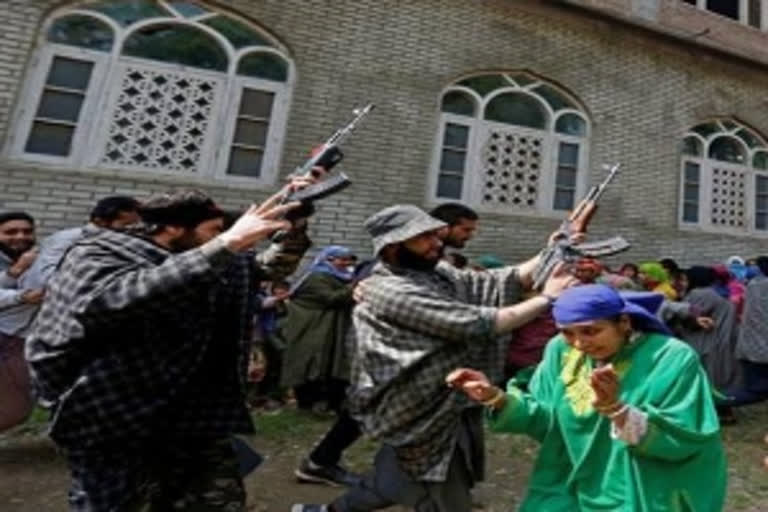New Delhi: The year 2020 was one of the mixed results for the Indian security establishment in the militancy-plagued Kashmir Valley.
While the good news is the restriction of Pakistani and Afghan origin militants trying to sneak in, the bad news is that locals are fast taking over.
Of a total of 226 militants killed in 2020, 176 or 78 per cent are locals with the rest 50 of foreign extract.
The rising level of disgruntlement among the local populace has led to at least 40 per cent more taking to arms compared to 2019.
While the number of locals joining militancy for 2020 stands at 166 according to the Army’s figures, it doesn’t take into account the number of ‘missing’ youth who potentially may have possibly added to the militant ranks. The actual numbers therefore may be much higher.
In 2015, 2016, 2017, 2018, and 2019, the number of local recruits stood at 66, 88, 128, 191 and 119 respectively.
Foreign militants have been thwarted at the Line of Control (LoC) by a sturdy security grid, better surveillance and anti-infiltration grids that have become more effective due to using drones, better electronic surveillance and human intelligence.
Why more local youths?
Just after the August 5, 2019 abrogation of Article 370, the activity of local political parties became severely restricted.
This led to the lack of a grievance redress mechanism at the grassroots level.
As a result, the grievances of local energetic youth could not find an outlet. For such youth, militancy provided a way to vent out their emotions.
But the problem with local militancy is that it has a domino effect when the militants get killed.
It leads to a vicious cycle of increased militancy that feeds off the disgruntled family and larger kinship network, increasing prospects of more recruitment.
Such deaths have the potential to trigger uncontrollable protests in the Valley.
Why more deaths?
Concomitant with the increase in the numbers of local youths joining militancy, in 2020, the number of militants killed in action has also increased sharply and the year recorded the highest number of ‘kills’ in the last five years.
In 2020, according to Army sources, at least 226 militants have been gunned down, a spike of 48 per cent from 2019. The numbers of militants killed in 2016, 2017, 2018, and 2019 are 141, 213, 215, and 153 respectively. The total tally in the last five years stands at 948.
Besides a tough posture maintained by the security forces, the number of militants killed shows an increase due to the fact that the new recruits are ill-trained and poorly equipped although their motivation levels are high, implying that emotions have had a major role.
Choked up funds, busting weapon supply networks, better security and counter-insurgency grid etc have played a major role.
Big Problems
But there are several problems in the changing profile of the militant cadres.
In such insurgency situations, it is not long before that a group of hardened local cadres emerge with adequate knowledge of the terrain, demography and with a more effective network and support base.
Significantly, there is also a greater chance of ‘lone wolf’ attacks which is very difficult to arrest or to prevent.
Three-pronged strategy
What the government can do at such a time is to focus on a three-pronged strategy.
Take up ample rehabilitation measures for those opting to come out of the militant ranks or those apprehended.
In 2020, nine militants have surrendered while 55 were arrested.
There should be a well-laid down debriefing programme so that the militants can get over their doctrination.
Such individuals can be solid assets and can be role models for furthering pacification in the community.
While adequate employment avenues should be generated, there should be a creation of political space for youth participation—this alone can go a long way in curbing militancy.
Says Prof Kumar Sanjay Singh who teaches history in Delhi University: “Success or failure of a nation depends on the flexibility and capacity to absorb disgruntled communities within the fabric of the nation.” Kashmir can well be a test case for the country.
Also Read: Decline in infiltration, terror incidents; 225 terrorists killed in J-K in 2020: Police chief



